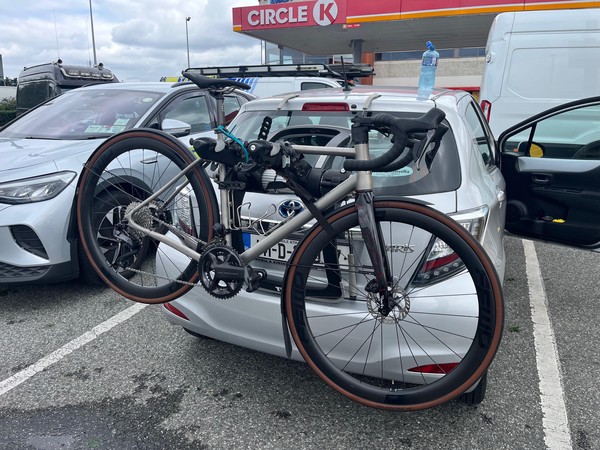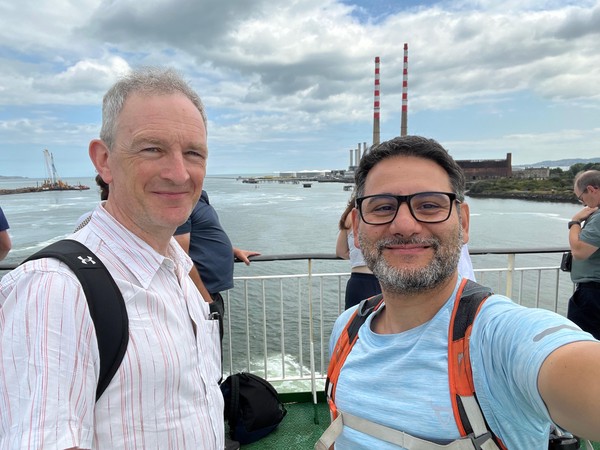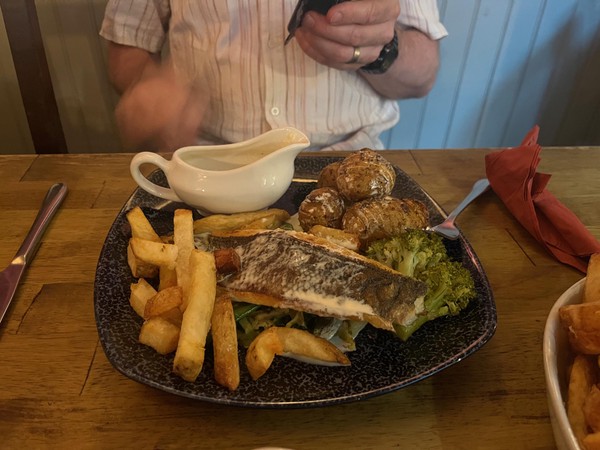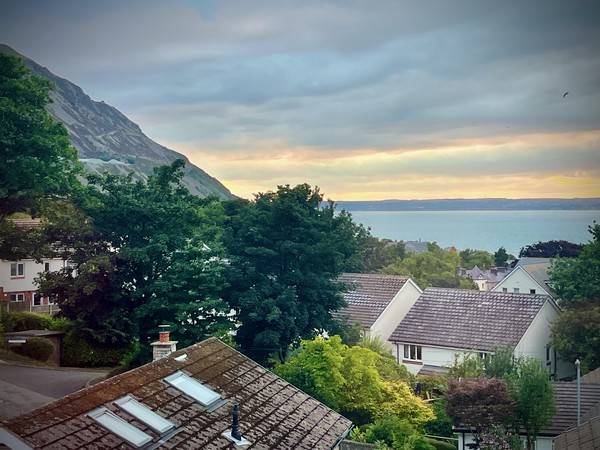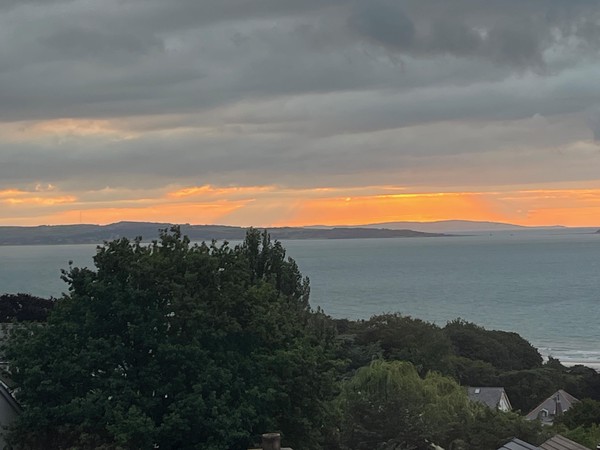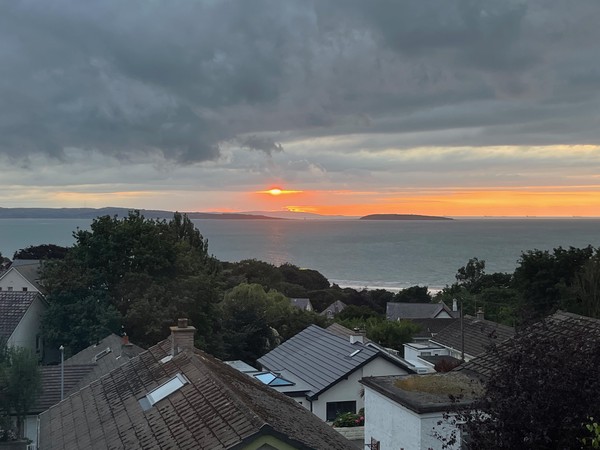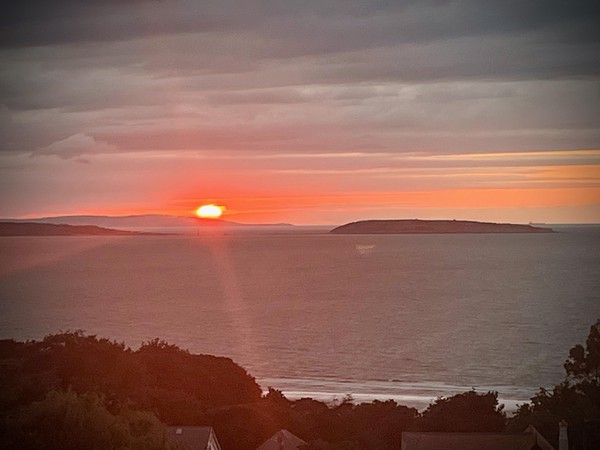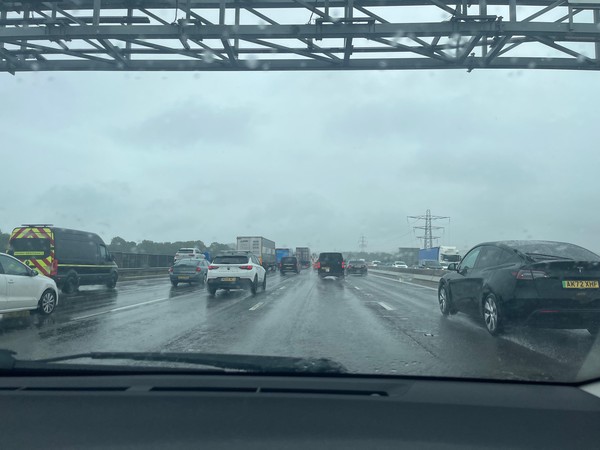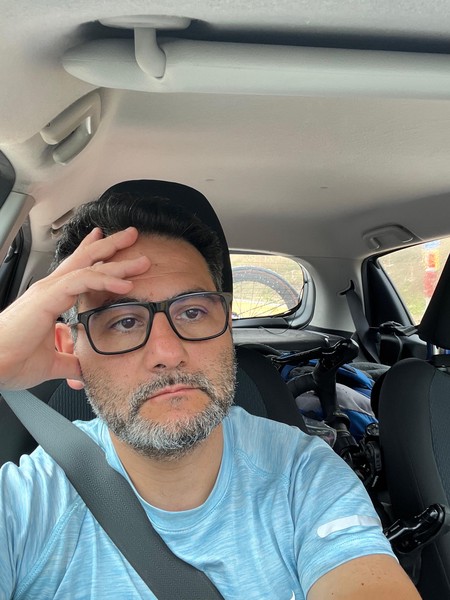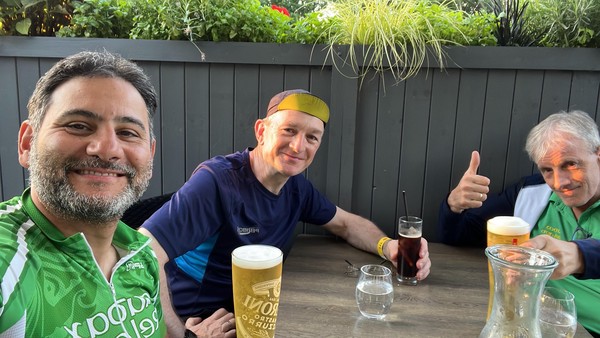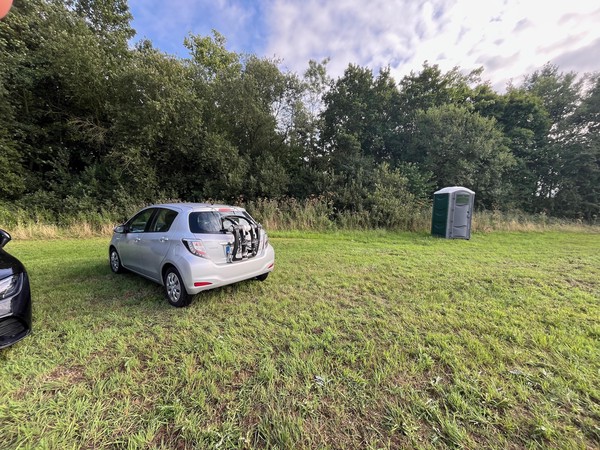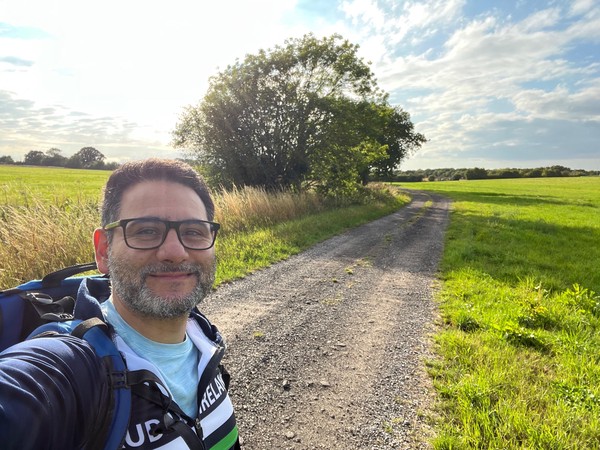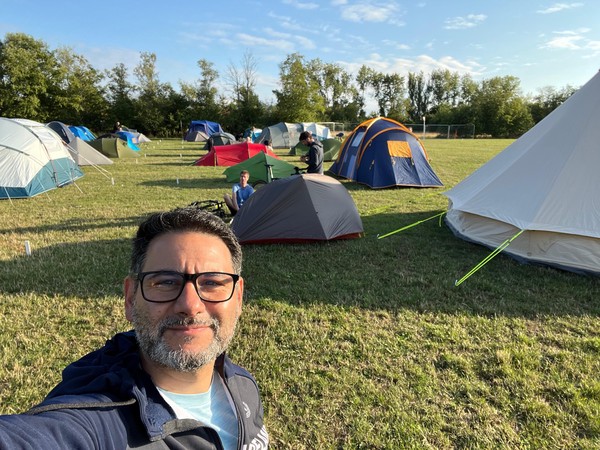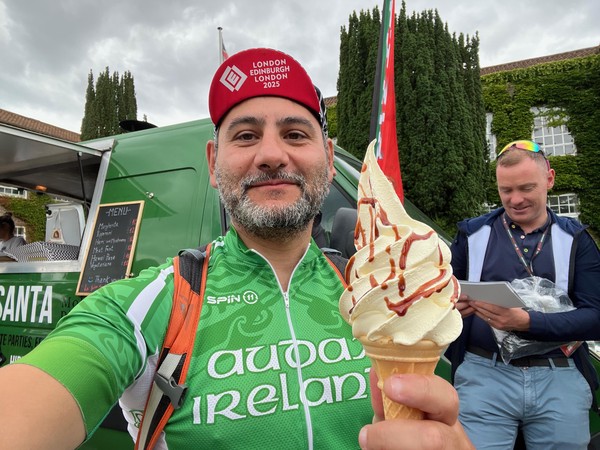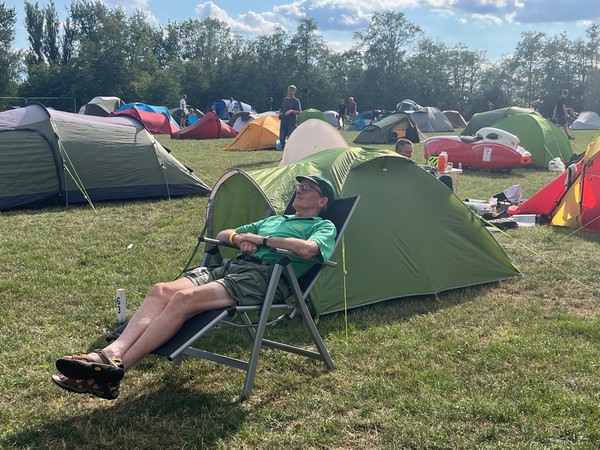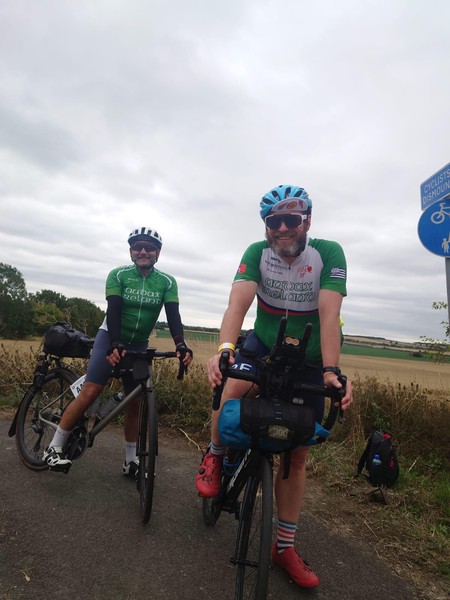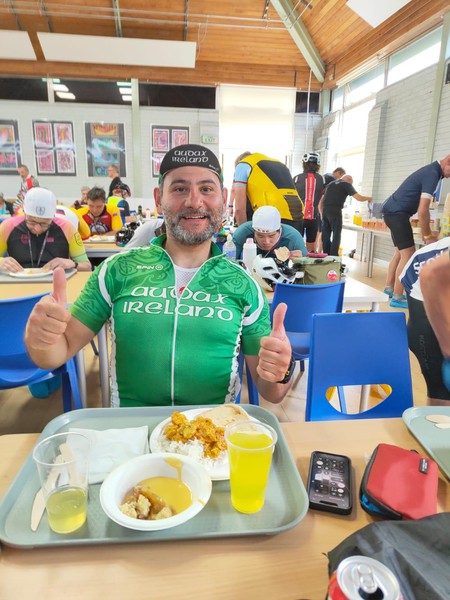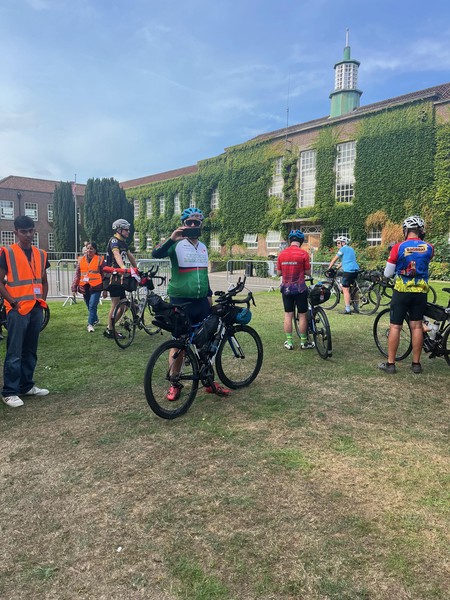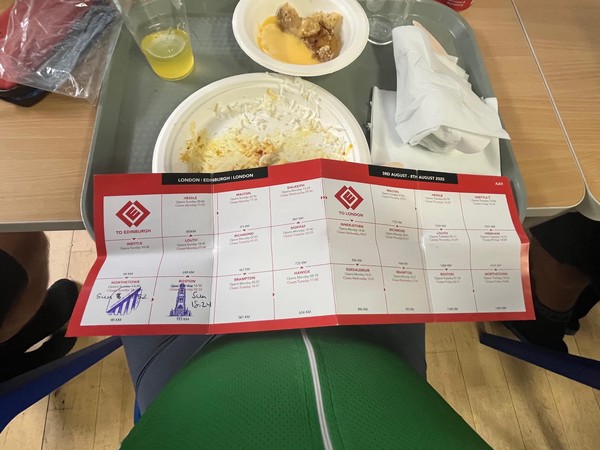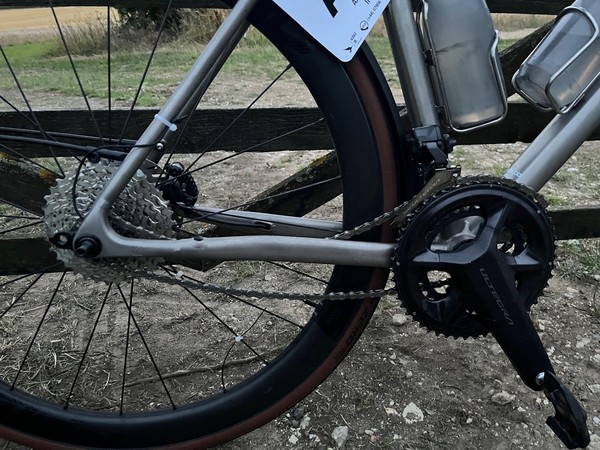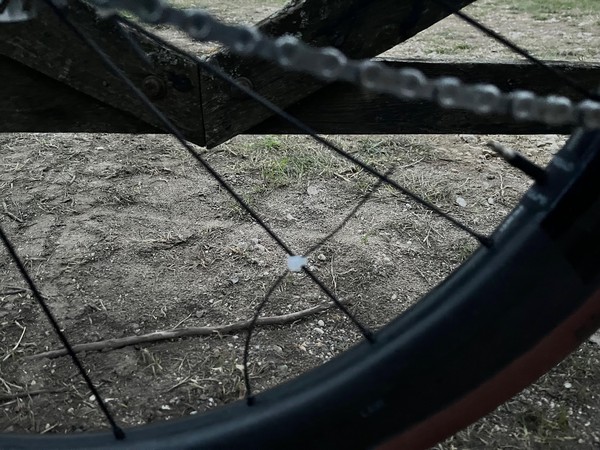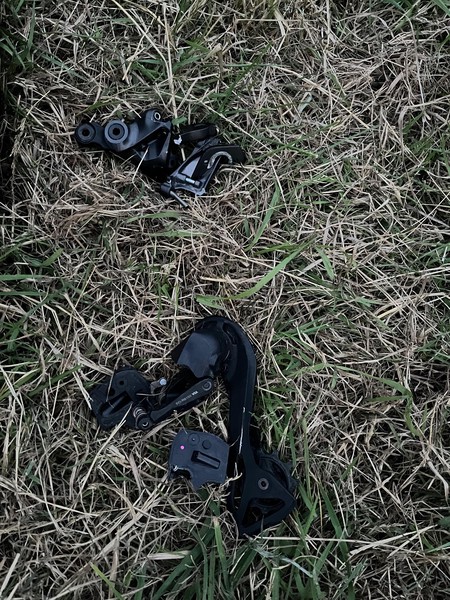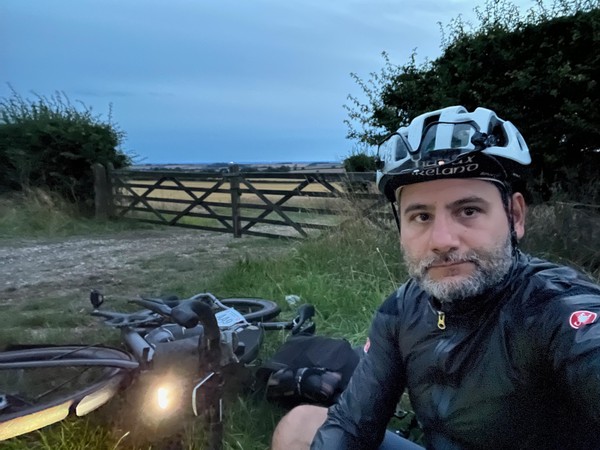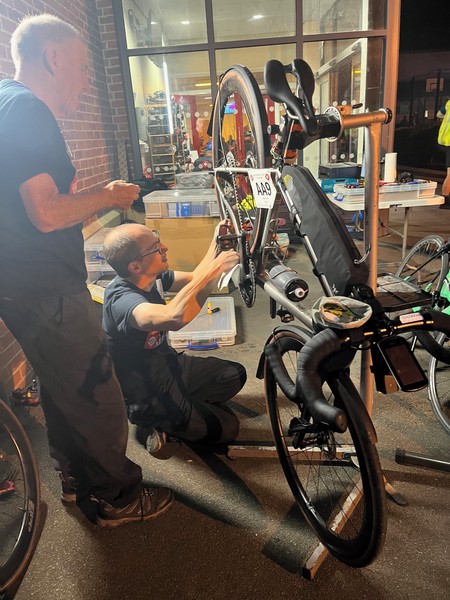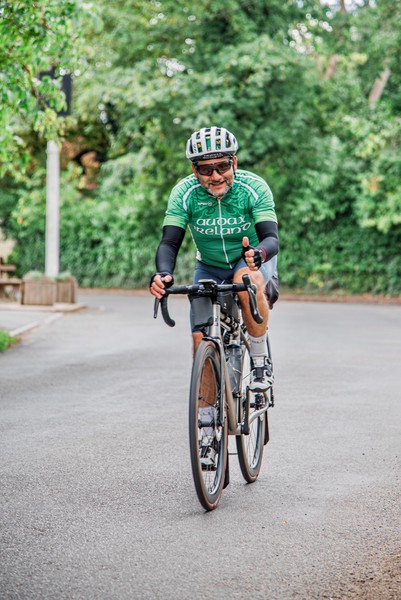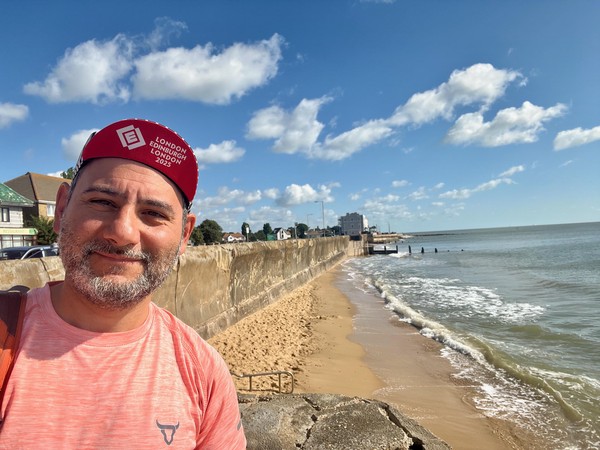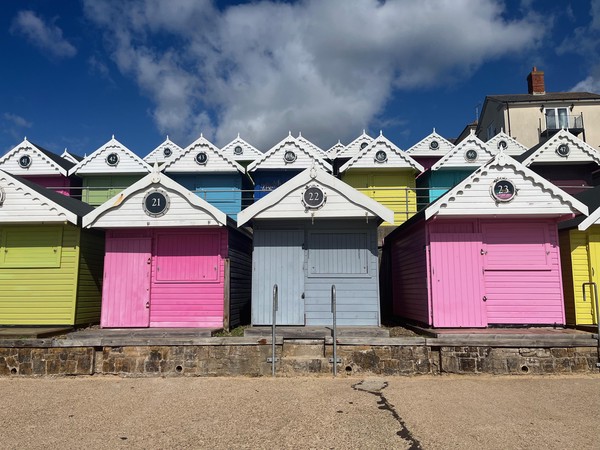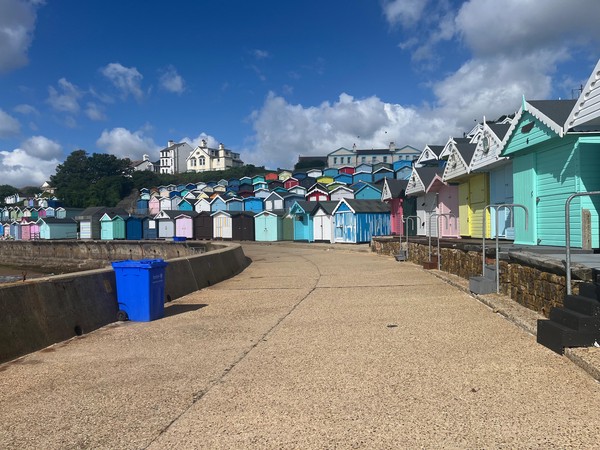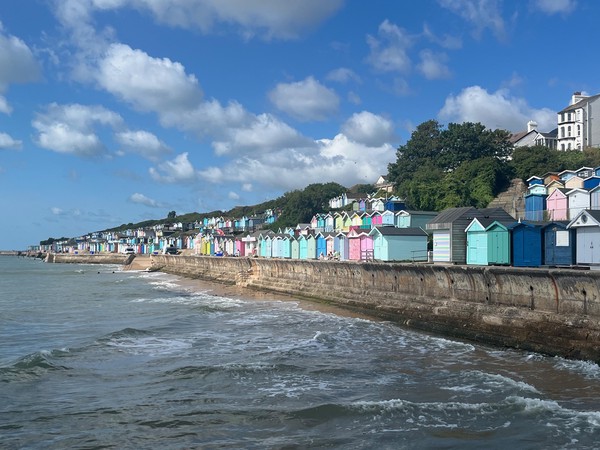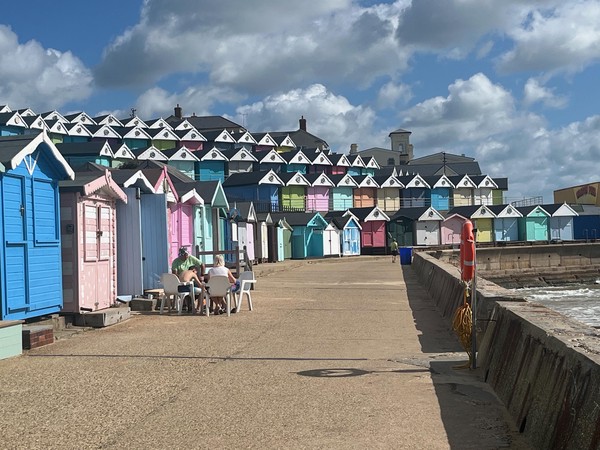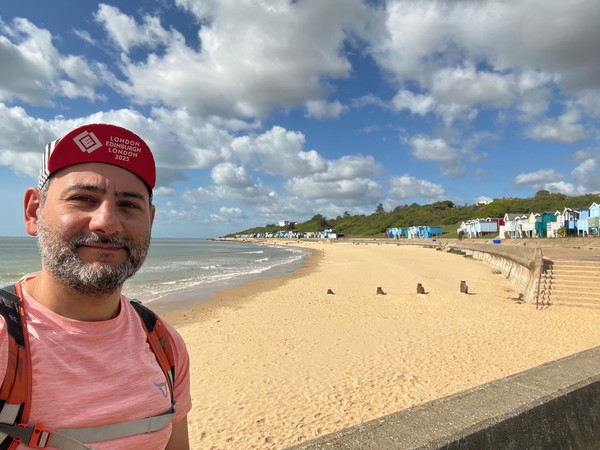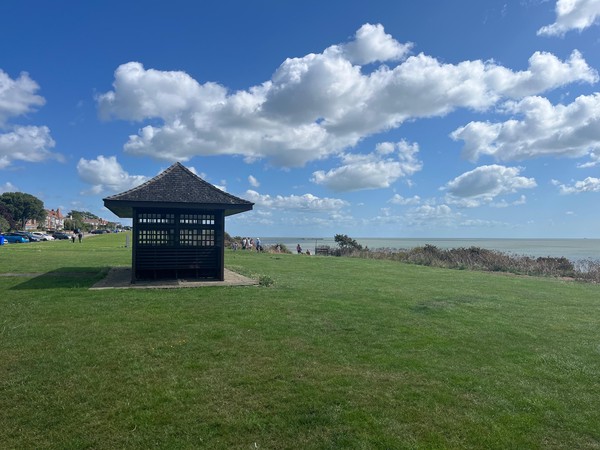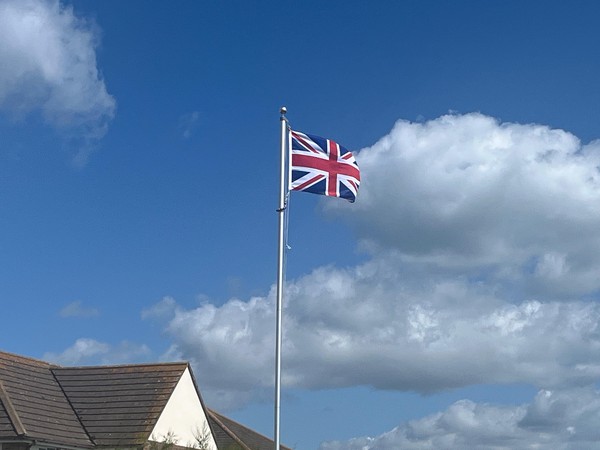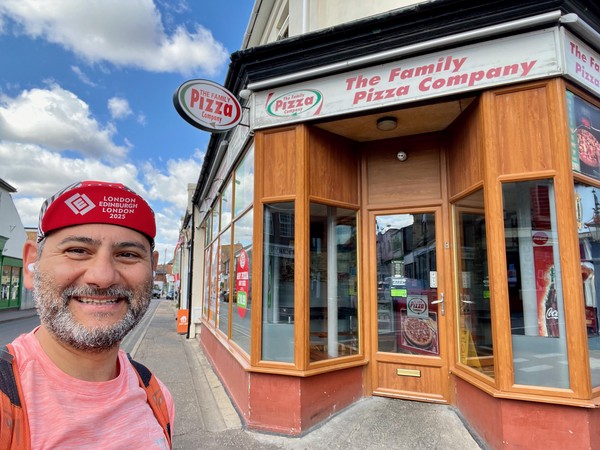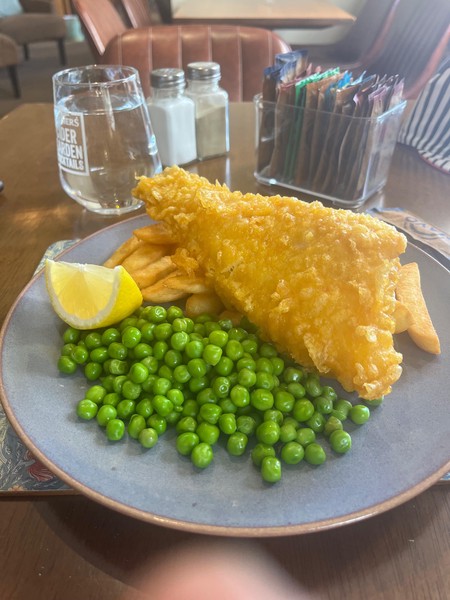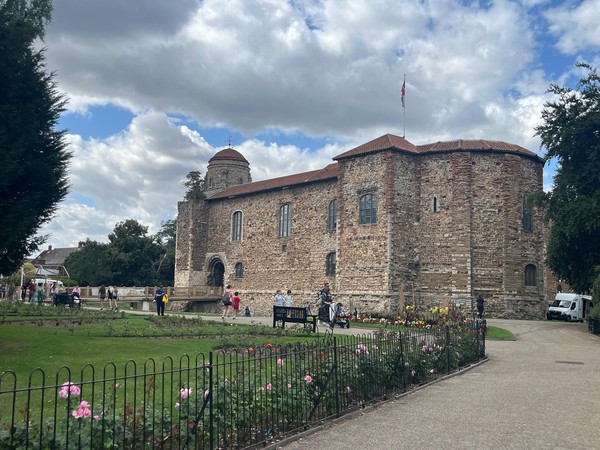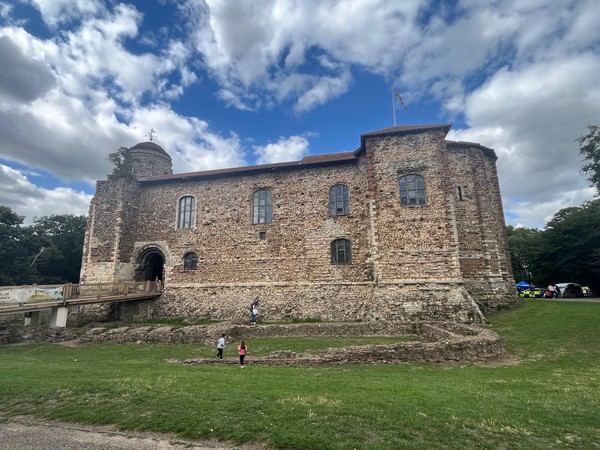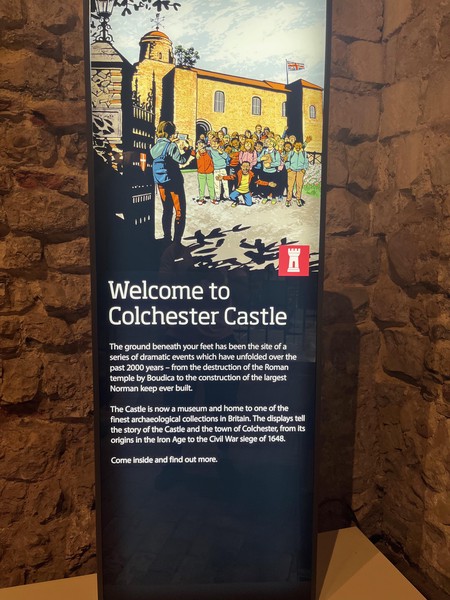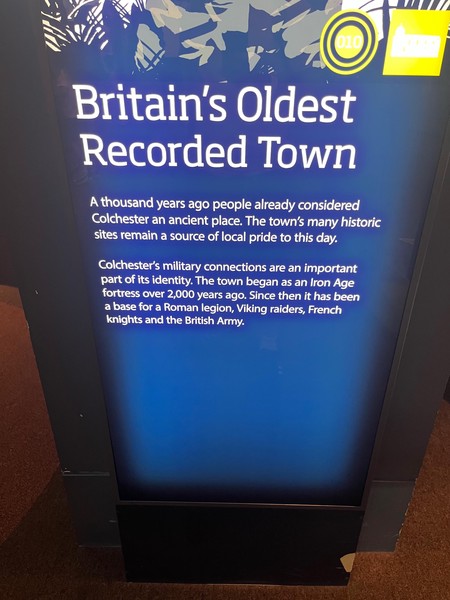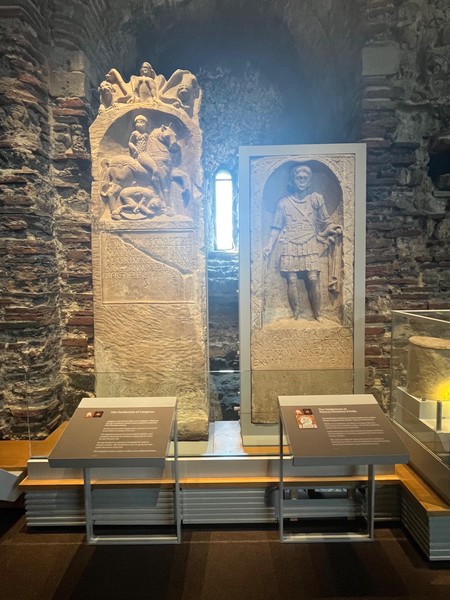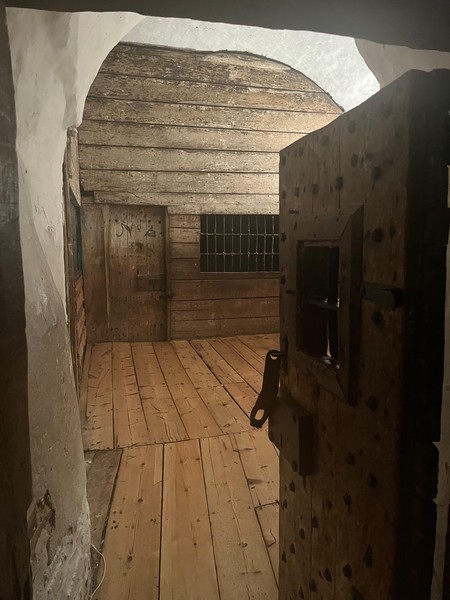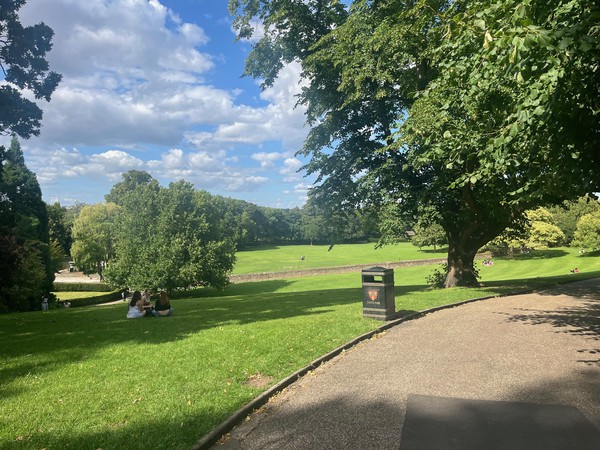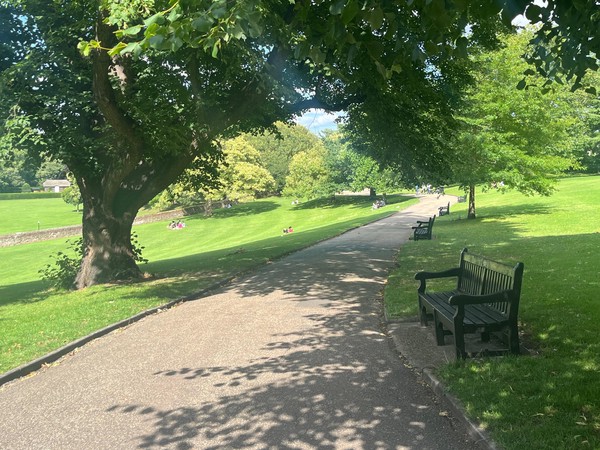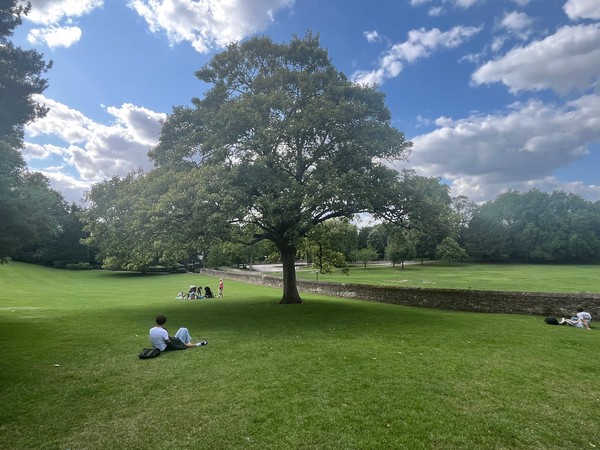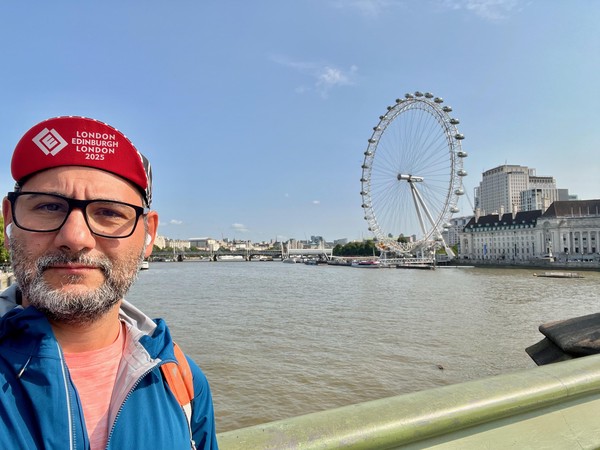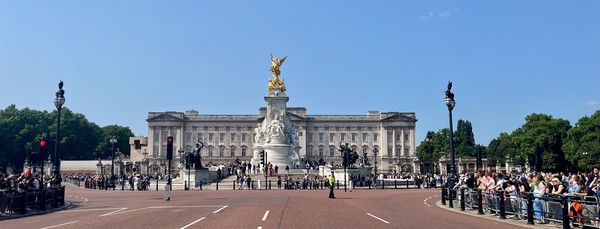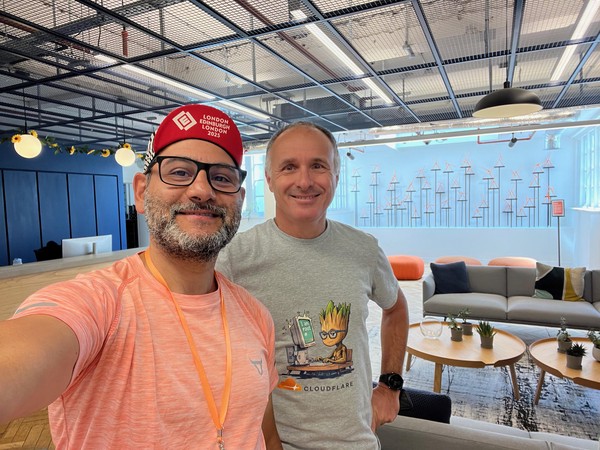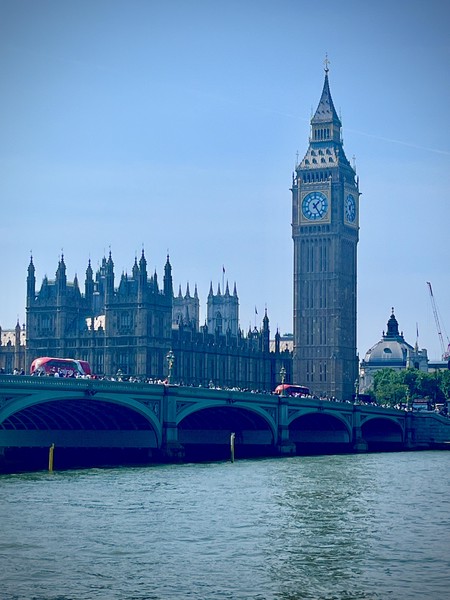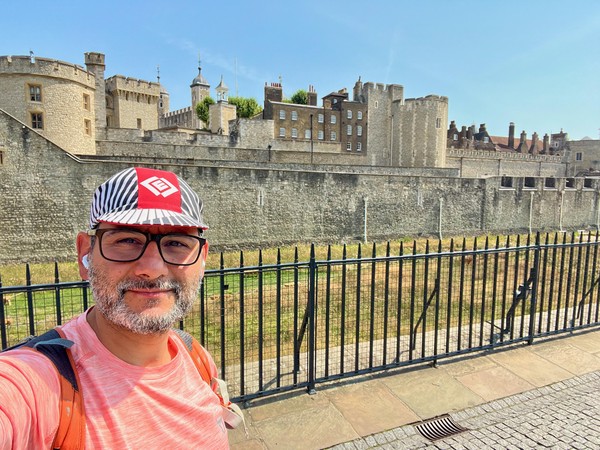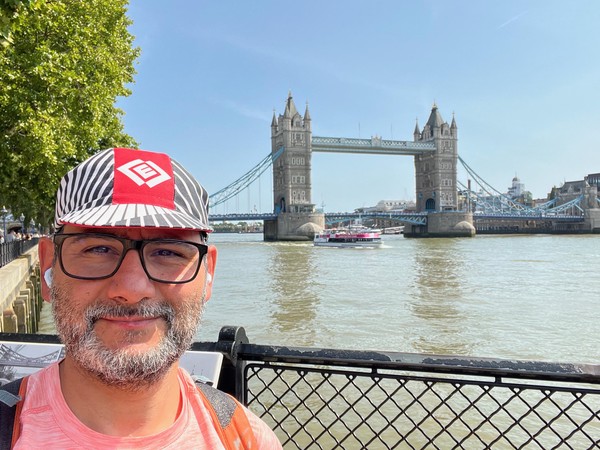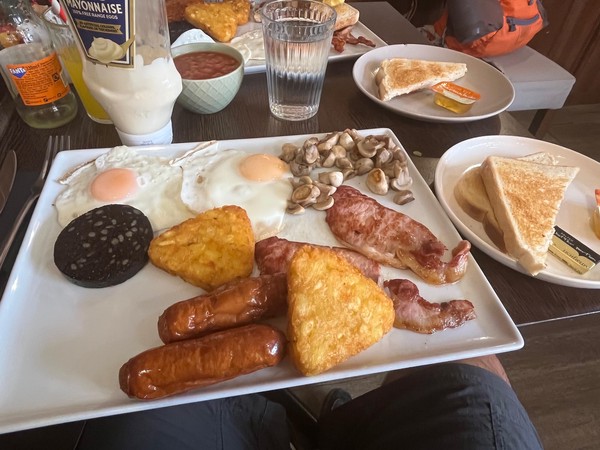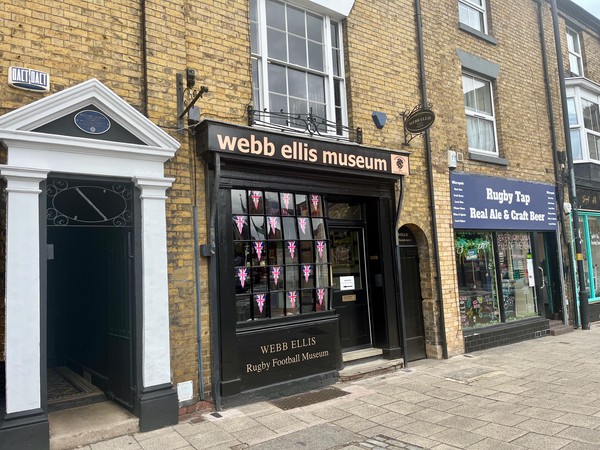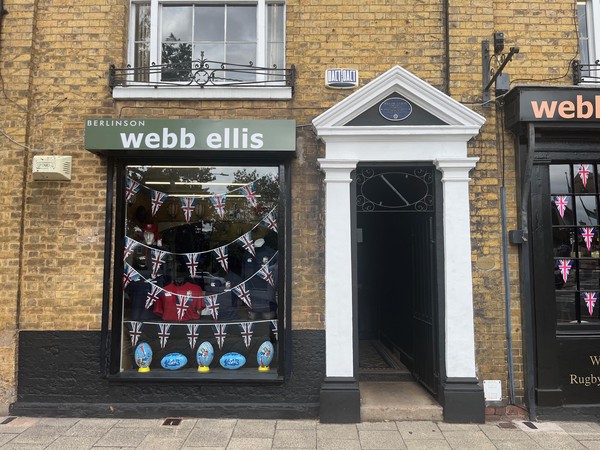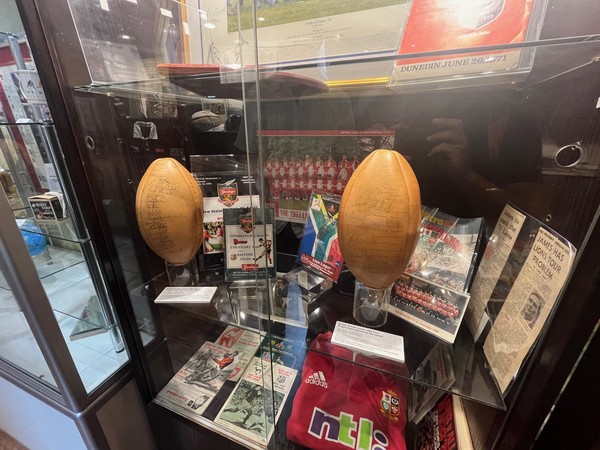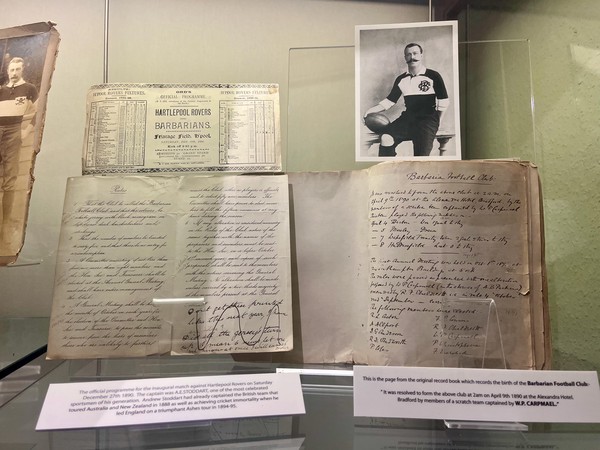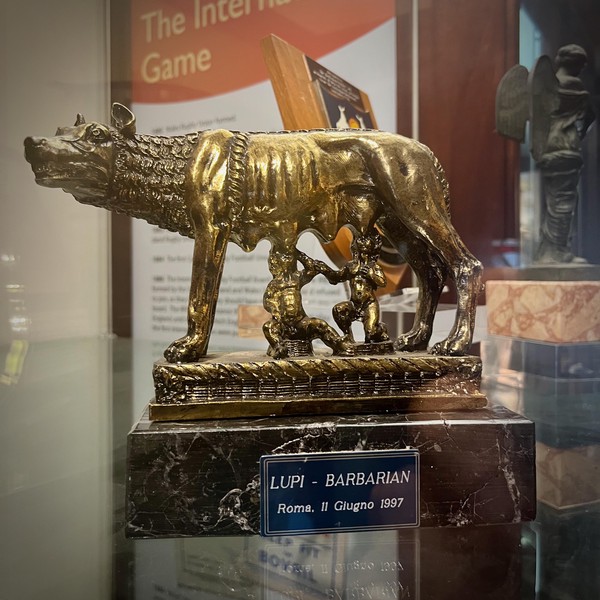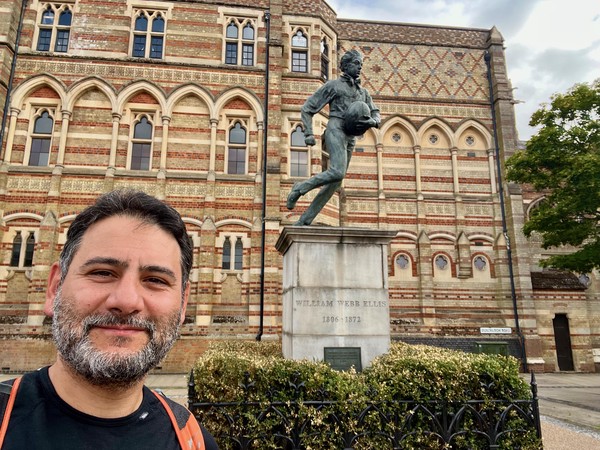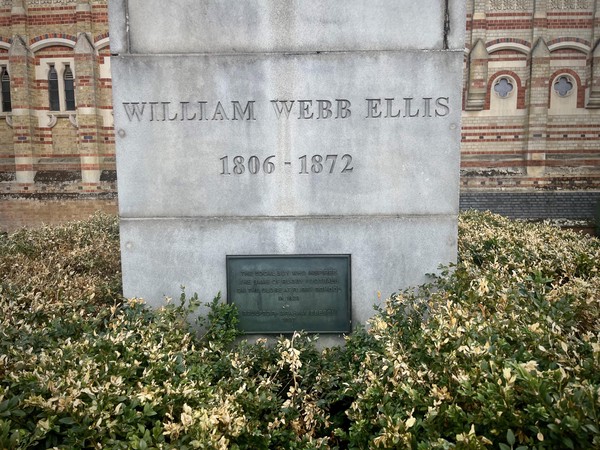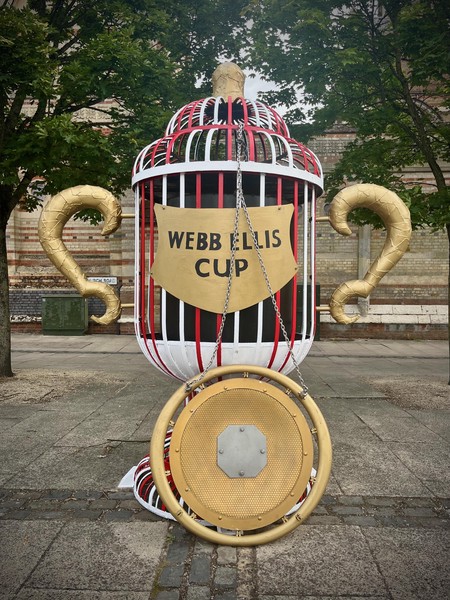DNF'ing LEL25 and Lessons Learned
London Edinburgh London (LEL) 2025 proved to be an unforgettable event, though perhaps not for the reasons anyone anticipated. My own journey ended prematurely on the first day, and the entire event was later called off due to severe winds sweeping across northern England and Scotland.
If you want to skip directly to the lessons learned, feel free to do so at the bottom.
For those unfamiliar, LEL is a prestigious 1500km audax challenge, a true test of endurance that takes riders from Writtle, Essex, all the way to Innerleithen near Edinburgh, Scotland, and back again. This year, around 2,500 cyclists from around the world gathered to tackle this epic adventure.
Getting There
Following suggestions from experienced riders like POD from Audax Ireland, I decided to arrive a few days before the start to minimize stress and anxiety.
This time, I opted to drive rather than take the sail-and-rail option, catching the ferry from Dublin to Holyhead. This proved to be a wise decision, as having the car later became quite convenient (more on that later). To keep costs to a minimum, I shared the drive and ferry with Seamus O’Leary from Audax Ireland. We also decided to go camping instead of booking a hotel in Chelmsford or staying at the student accommodation in Writtle College.
The total cost for the ferry (car plus 2 passengers) was €585.
Originally, we planned to take the 2 AM Friday ferry (the start was on Sunday), sleep in a cabin, and then drive the 5.5 to 6 hours to Writtle. However, some friends of Seamus offered to host us in North Wales for two nights (one on the journey to London and one on the way back).
We changed our ferry booking from 2 AM to 2:30 PM. I met Seamus at the port, and we made the crossing. We then enjoyed a lovely dinner at the Gladstone pub near Penmaenmawr, followed by a night at Seamus’s friends’ house.
The view from Seamus’s friends’ house was spectacular!
From Penmaenmawr, the drive to Writtle took around 6 hours and 30 minutes, primarily because I detoured to drop Seamus off in Daventry to catch up with some friends before continuing to Writtle. It was pretty miserable as the M6 and the M1 were congested (rush hour) and it was raining heavily.
Days in Writtle Prior to the Start
Upon arriving in Writtle around 6 PM, I set about pitching our tents. This task was completed in the rain, but thankfully, the weather improved significantly a few hours later, treating us to some lovely sunshine.
The location of the long-term parking for cars was a bit annoying: a 3.2km walk (Strava link for proof :P). In retrospect, I believe there was enough space for me to park the car adjacent to the camping ground…
Spending the two days prior to the start proved to be a wise decision. It allowed me to ease the pre-event anxiety, mingle with fellow audaxers, and simply relax. I had ample time to get registered, collect my starter pack, and meticulously prepare my bike for the journey ahead.
On Saturday, we gathered for a commemorative photo:
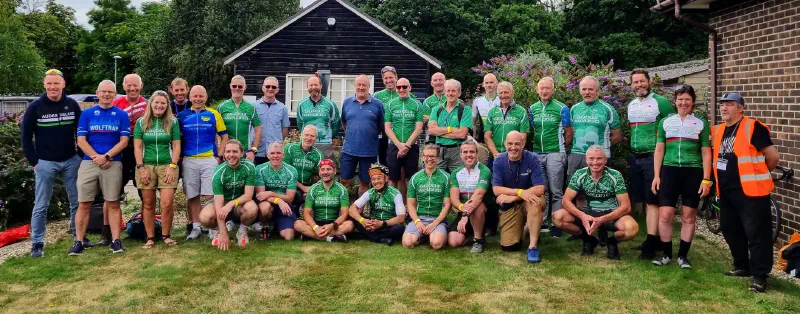
I then went to register and get my starter pack, including a bottle, jersey, cap, and the number to attach to the bike. It was nice to find a tiny sachet of Butt’r chamois cream in the pack, and some earplugs :D
Bike Setup
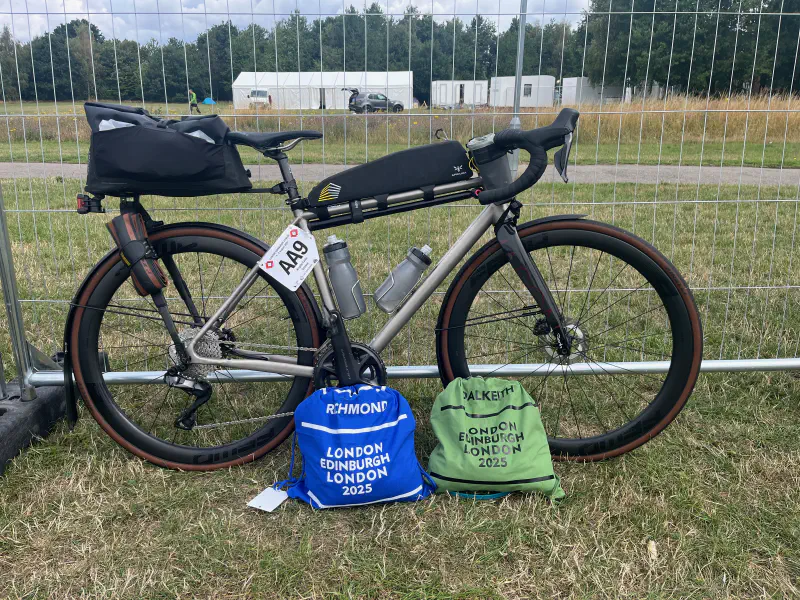
Let’s talk bike setup.
Bike
I rode my new Mason Aspect Integrale. I had given it a test ride at the Celtic Knot 1000 and was very happy with its performance. The drivetrain was Shimano Di2 Ultegra, with a compact gearing setup. The wheels were FFWD RYOTT 44. I love these wheels; they feature external brass nipples and DT Swiss 240 hubs with a ratchet system. I had mounted Pirelli P-Zero Race TLR 30mm tires and carried a spare (non-tubeless) one with me, strapped to the Tailfin bridge. The bike had permanent mudguards (I live in Ireland, after all!), from Portland Design Works.
Bags and What Was Inside Them
In terms of bags:
- Tailfin Carbon AeroPack Cargo: packed with rain gear (Gore-Tex Shakedry, rain legs, shoe covers, winter gloves, helmet cover, and flip-flops in the side pocket).
- Apidura long top tube bag: for GPS tracker, snacks, and spare lights.
- Apidura small feedbag: for snacks. I chose the small bag because the long one tends to rub against my knees when standing on the pedals.
Spares
- 1 Pirelli P-Zero 30mm (tubed version), strapped to the rack
- 4 TPU tubes (mix of Ciclami, RideNow, Pirelli)
- 2 spare valve cores
- A few TPU patches and glue, butyl patches and glue
Tools
- Multitool
- Leatherman
- Tire levers
- TyreGlider
- Gloves
- Rag
Lights (No Dynamo Wheel)
While I had ridden PBP and other brevets with dynamo wheels on my Grizl, I decided to try doing a long brevet on battery lights, as battery technology has made significant progress. I still felt a bit anxious about batteries. Plugging your own socket chargers at controls was forbidden due to fire hazard, but the organizers provided a rental power bank service. Riders could swap a depleted power bank at any control, a service particularly appreciated by those riding the 1000km distance.
I went with the following lights:
- 2 x Lezyne Macro Drive 1400+ (12 hours 30 minutes burn time)
- 2 x Busch + Müller Ixxi Rear Light (15 hours burn time, single solid LED and StVZO-approved)
The front lights were set up to run in “race mode,” meaning only two modes were available: high beam and low beam. The low beam lasts an impressive 12 hours and 30 minutes!

My plan was to swap between both front and rear lights every day and charge them using the power bank when on the move.
Navigation
I have a Garmin Edge 1040 for navigation; the battery is phenomenal, something like 80h with the right adjustments (e.g., disable Bluetooth, drop screen backlight to 0).
Charging
- Various USB cables for lights and Garmin
- Di2 charging cable; at CK1000, I saw you can easily do 1,000 km on one charge. But I bring the cable just in case.
- 1 x 10,000 mAh battery, plus the rental 5,000 mAh battery from the organizers. I didn’t have a chance to test this setup due to the DNF :(
Bag Drop Strategy
At LEL, riders are allowed two bag drops (with additional drops available for a fee) at controls along the way. I packed them with a full spare clothing kit each (bibs, socks, base layer, gloves). I chose Richmond and Dalkeith, with the idea of splitting the route into roughly 300km blocks. I could never test this strategy, though, due to the DNF.
The Ride, the DNF, and Having to Abandon
My start time was 10:30 AM, with waves of 45 riders departing every 15 minutes. Compared to my 5:30 PM start at PBP23, this felt like a luxurious lie-in. Waking at a sensible hour, enjoying breakfast, and even cheering on the earlier starters? Pure bliss.
The weather for my wave was, ironically, excellent, with glorious sunshine. The first ~250km of the ride are famously flat, traversing Essex and the wonderfully named The Fens, a naturally marshy region utterly devoid of hills. While flat terrain usually sounds like a cyclist’s dream, it quickly becomes less so when paired with the UK and Ireland’s typical strong winds. Unsurprisingly, that day brought a delightful north-westerly, ensuring headwinds or crosswinds for most of those initial 250km. Joy.
I rode this opening section with Ian, a tall, strong rider from Audax Ireland. Drafting behind him was, shall we say, highly appreciated. I dutifully offered to take my turn at the front, but being a smaller, shorter rider, he kindly (and perhaps a little too honestly) informed me I wouldn’t make much difference to his effort. Thanks, Ian! :P
Around 40km in, I noticed a group of riders rapidly gaining on us. ‘Ian,’ I suggested, ’let’s check them out! Perhaps they’re competent riders we could work with.’ Now, at long brevets like LEL, riding in large groups, especially with unfamiliar people, is generally not advisable. The crash risk is high, as many audax riders aren’t accustomed to big pelotons; most ride solo or in small groups, and some might not be proficient at signaling obstacles or organizing a proper paceline. But this particular group? They were different: skilled, competent, and fast. They signaled effectively and had a proper understanding of how to share the load at the front. Ian and I asked if we could join and collaborate, and they happily agreed. They were from Spain (Basque Country, I believe), and our strategy was simple: each take a 1km turn at the front. With about 10 people, this meant sitting in the slipstream for 9km and working hard for 1km, a win-win situation given the conditions. Or so I thought.
I decided to accept this calculated risk, weighing the benefits against the potential for early exertion. While pushing hard at the beginning could certainly come back to haunt me later, my average speed was around 27km/h. I believe this was my second-fastest 200km ever, and we were flying past many riders who had started before us. I knew that after reaching the Louth control (CP3), the terrain would become hillier, making it more challenging to stay with the gruppetto. In fact, about 20km from Louth, I was chatting with the Spanish riders, thanking them for allowing us to join and for the incredible progress we’d made. I mentioned that the hills were approaching and that, as everyone climbs differently, we would likely split up.
It was around this precise moment that I heard a loud bang. I turned back and saw two people I hadn’t previously noticed in the group hitting the ground. Then, in slow motion, I saw a front wheel lodged between my rear Di2 derailleur and my wheel. My brain registered: ‘Oh, this isn’t good.’ I tried to control the bike and stay upright, somehow managing to avoid hitting the asphalt myself. I attempted to restart pedaling, but something felt distinctly off. I pulled over to the side of the road to check, and then it hit me: my derailleur was… gone. Vanished. Poof. Just like my hopes of finishing LEL.
Despair hit me, followed by a string of curses, of course. I spent the next few minutes trying to regain some composure and assess the situation. Ian was incredibly helpful, trying to calm me down amidst my muttered expletives; I was struggling to do simple things like twisting the broken spoke around a good one or splitting the chain. My first priority was to inspect the bike. One spoke was gone, and the rear derailleur had completely snapped off the mech hanger, getting twisted into the rear triangle. I didn’t have any spare spokes or nipples with me, nor, of course, a spare rear derailleur. Because who packs a spare Di2 derailleur for a long ride, right?
My initial thought was to try and wrap the broken spoke around a good one using zip ties. I spun the wheel, and it seemed it wasn’t buckling too much, which might have allowed me to limp the 20km to the control. However, the derailleur was beyond repair, broken into three pieces around its pivot points. I considered converting the bike to a single-speed: small ring on the front and the middle of the cassette at the back, to keep the chainline as straight as possible. But I struggled to size the chain; it was either a link too short or the next link was too slack, making the bike unsafe to ride. At this point, the grim reality set in: I wasn’t going to make it work.
I decided to call the organizers’ emergency number to see if someone could pick me up and take me to the closest control to speak with the mechanics there. I got out my mobile phone and dialed the number, only to discover that my Vodafone Ireland pay-as-you-go contract did not allow international calls, though it did permit international data roaming just fine. Because, you know, priorities. (One could open another topic on the modern era and how people just rely on WhatsApp texts and calls these days, but perhaps that’s an argument for another post :D). Thankfully, Ian was still there, and I asked to use his phone. When I rang the number, I was asked for my name and rider number, immediately followed by questions about my health. From the call, I got the sense that these people knew exactly what they were doing and had years of experience dealing with such situations. It also came to mind that the number of support vans was limited, and they must prioritize people who were injured or in more difficult circumstances. So, I told them I was fine, but my bike was broken, and I needed help to talk to the mechanics at Louth. They informed me they could pick me up in 1.5 to 2 hours. ‘That’s perfectly fine,’ I replied, ‘I understand.’ I was sheltering from the wind behind an embankment and was surprisingly comfortable, given the circumstances. I also confirmed that if my bike got fixed, I must be returned to the exact spot where I stopped, as per audax rules.
At that point, Ian and the other riders, including the person who had crashed into me (who left me his email address, offering to help with repair costs once we were all back home, a true gentleman, even if he did inadvertently end my LEL), left. I then sat on the side of the road, sorting out my Vodafone contract (because that was the most pressing issue at the time), while hundreds of other participants cycled through. Each and every one of them asked if I was okay and needed help. I must have said ‘I’m okay, thanks, carry on’ hundreds of times! My voice was hoarse by the time Myles (a volunteer at Louth) finally picked me up around 10:30 PM and whisked me away to the control.
At that point, I was well aware that the chances of continuing were slim. I didn’t have any spare spokes with me, and while I could have potentially sourced a spare wheel from a volunteer or a shop the next day, I was also well aware that the ‘Floris’ storm was approaching. There were already whispers about the organizers canceling the event and sending people back.
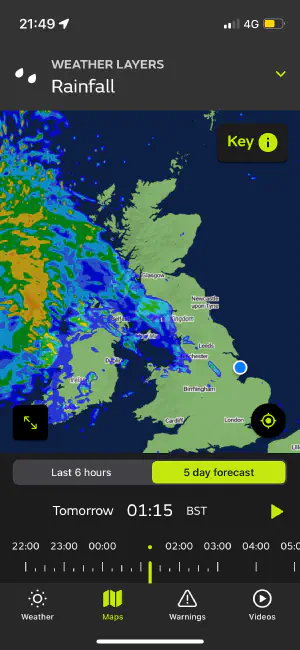
The event is difficult enough as it is; doing it single-speed with a setup that could skip at any moment was going to be a special kind of hell. At that point, I just wanted to get my bike in a condition that allowed me to limp to the closest train station on my own the next day. In addition to that, I would never expect controls to have spare Di2 rear derailleurs (though, surprisingly, they did have some mechanical 11/12 speed spares, and I even saw one fitted to another rider!). There was even someone (a volunteer) at the control who incredibly offered me his bike! But I politely refused. First, I didn’t want the responsibility of someone else’s bike, and second, I was also concerned about fit. Riding 1300km on an ill-fitting bike after a crash? No thanks.
The mechanics spent around an hour fiddling with my bike, without success. They were struggling to create a single-speed setup, explaining it was a combination of my bike’s chainstay tube length and probably the 12-speed chain being narrower than old-style 9/10-speed ones. On a real single speed, the rear hub can be moved back and forth to adjust speed tension, but not on a normal road bike.
Anyway, other people were coming and needed help, so my bike was put aside to focus on more solvable problems. In audax circles, they always say not to take any drastic decision (e.g., abandoning) unless you’ve had some food and some sleep. So, I decided to go get dinner, have some sleep, and figure out what to do the next day. My cut-off point for the control was 7 AM. I went to get a shower and then to the dormitory:
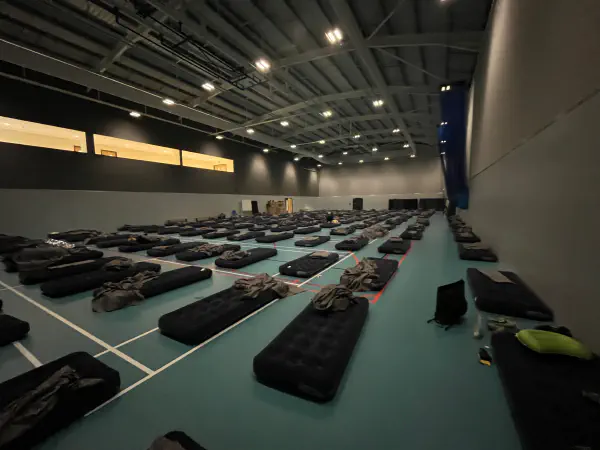
The next day I woke up, had breakfast, waited for 9 AM, and called a shop near the control, but they didn’t have any spare Di2 components. I checked amazon.co.uk for one to deliver at the control the next day, but they wanted 500 EURO (lol, I was not going to spend that money when I knew Bike24 sold it for 278). The mechanics, who had been up all night fixing things, sadly told me my bike was hopeless. At that point, I decided I had tried everything, and it was time to abandon. I went to talk to the organizers to communicate that. And then figuring out how to go back to Writtle became the next, rather unexpected, challenge.
Getting Back to Writtle
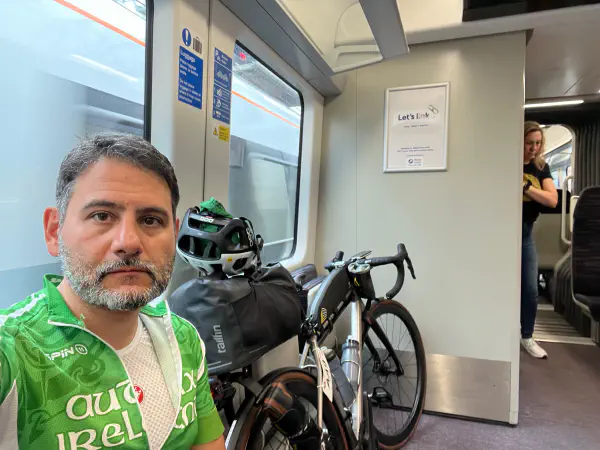
The next morning, I officially declared my intention to scratch (a fancy way of saying “I’m out”) and asked the organizers for tips on how to independently make my way back to Writtle College. Their advice? “Use the Trainline app.” Simple enough.
As I was fumbling with the app, I met Giovanni, an Italian rider who had, shall we say, a very limited grasp of English. The organizers were struggling to assist him, so they turned to me, the unofficial translator and travel agent. Lucky me! I booked us a series of trains: Grimsby -> Doncaster -> London King’s Cross -> London Liverpool Street -> Chelmsford. Easy peasy… on paper.
Since I couldn’t ride my bike, Myles (the hero volunteer) drove us to Grimsby in his van. From there, the real adventure began. Picture this: Giovanni and I, standing shoulder-to-shoulder on packed trains from Grimsby to London King’s Cross, bikes awkwardly wedged into whatever space we could find. Transporting bikes on UK trains? Just as “fun” as in Ireland—by which I mean, a logistical nightmare. The train to London was a bit better and had a cage, for only 4 bikes though…
Once we arrived at King’s Cross, the next challenge awaited: a 4km walk to Liverpool Street Station. Why? Because apparently, dragging a bike through central London is the new cardio.
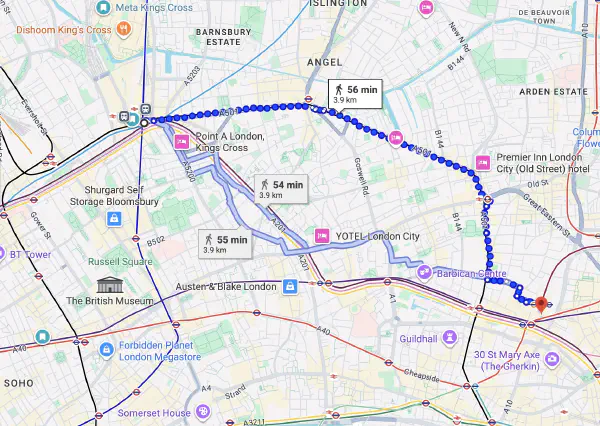
After surviving the urban trek, clutching my phone and hoping no one on their e-bikes would snatch it from me, I hopped on the train to Chelmsford. But wait, there’s more! From Chelmsford, I had the pleasure of walking another 4km to Writtle. Because why not end the day with a bonus hike? By the time I arrived, I was half-convinced I’d accidentally signed up for a triathlon instead of a cycling event. My Garmin measured 22,000 steps:
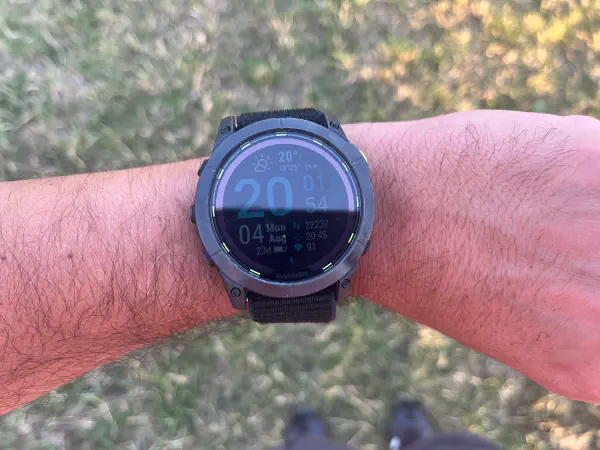
Turning Bad Luck into a Vacation within a Vacation
So now I was back in Writtle, and absolutely nobody was there :D It was Monday, the 4th of August, and I technically had to wait until the 8th for riders to return (assuming the event would continue normally). If my bike had been in rideable condition, I would have toured around, but it wasn’t, and I wanted to fix it on my own after returning to Dublin. Fortunately, this is where having the car paid off…
Day 1: Walton-On-The-Naze, Mersea Island, and Colchester
On day 1, I drove to Walton-On-The-Naze and had a good walk around the pier and promenade. The cabins are very colorful! I had fish and chips for lunch:
Then I drove to Colchester to visit the castle, museum, and park there. It is a Norman castle, dating from the second half of the eleventh century. The keep of the castle is mostly intact and is the largest example of its kind anywhere in Europe, due to it being built on the foundations of the Roman Temple of Claudius. At the museum, I learned that Colchester occupies the site of Camulodunum, the first major city in Roman Britain and its first capital. Colchester, therefore, claims to be Britain’s first city! What have the Romans ever done for us!
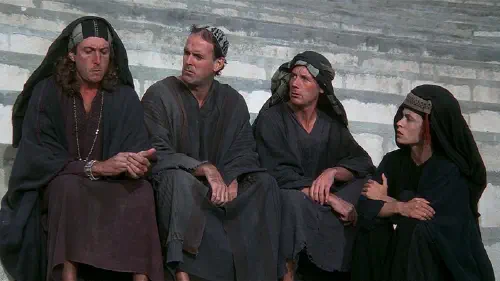
Day 2: London City and Lunch at Cloudflare
The second day I took the train to London and had some sightseeing there. London in August is packed, and I didn’t really enjoy the crowds. Better to visit off-season. For lunch, I met with Francesco Chemolli, an ex-colleague from the Facebook era now working at Cloudflare.
Storm Floris and Canceled Event
The following day, the organizers officially announced the cancellation of the event. Initially, they had paused the clock for four hours, instructing riders to remain at their respective controls while waiting for the storm to subside. However, after assessing conditions at Yard Moss—the highest point of the ride, where the route crosses the Pennines, and receiving reports from riders about hazardous winds, the decision was made to cancel the event entirely. Riders were advised to make their way back to Writtle as safely as possible by retracing the route.
For many participants, this meant covering nearly 1,000 km to return to the starting point. It was particularly disheartening for those who had traveled from distant countries like Australia, Malaysia, and Taiwan to take part in the event. While I empathized deeply with their disappointment, I couldn’t help but feel a small sense of relief that the ride was canceled, as it softened the blow of my own DNF.
Going Back to Dublin
The decision to cancel the event also meant that I would not have to wait until Friday for Seamus, as he would be back earlier than expected. We adjusted our flexible ferry ticket accordingly, and on the 7th of August, we drove back to Holyhead.
In my previous sporting life, I was a rugby player, and I had always wanted to visit the town where the sport originated. So, we stopped in the town of Rugby and visited the Webb Ellis Museum!
We spent another night at Seamus’s friends’ house in Penmaenmawr, and the next day, at 7:30 AM, we were on the ferry back to Dublin!
Lessons Learned and Other Considerations
- Always carry spare spokes and nipples, even if you don’t expect to use them.
- While group riding can be efficient, be cautious of crash risks with unfamiliar riders in long brevets. Skilled groups can be a significant advantage in adverse conditions.
- Ensure your mobile phone contract allows international calls when traveling abroad for events.
- Even if you expect long battery life, carry charging cables for all electronic devices, including Di2.
- Do not make drastic decisions (like abandoning) until you’ve had food and some sleep.
- Have a contingency plan for independent travel back to your starting point or accommodation in case of a DNF.
- Understand that event organizers prioritize injured riders; be prepared for potential delays if your issue is mechanical.
- Be aware that controls may not have highly specific spare parts (e.g., Di2 components).
- Converting a modern road bike to a single-speed after a derailleur failure can be challenging due to chainline and chain length issues.
- Consider the implications of borrowing someone else’s bike for a long distance, especially regarding fit and responsibility.
- Arriving a few days before the event helps minimize stress, allows for mingling, and provides ample time for registration and bike preparation. The same goes for picking accommodation as close to the start as possible.
- Driving to the start, rather than using sail-and-rail, proved beneficial for post-DNF logistics to turn this into a vacation while I was waiting for Seamus to come back.
- Always buy flexible tickets for the ferry; your plans might change, and you can change sailing times and options with minimal to no additional expense.
- A well-thought-out bag drop strategy can significantly ease the burden of carrying all necessary items.
- Battery light technology has improved; you probably do not need dynamo setups anymore, but do so in case you want to reduce anxiety.
- Consider the location of long-term parking relative to camping/accommodation for convenience.
On the Organizers and Volunteers
The organizers and volunteers of LEL25 were exceptional, showcasing professionalism and dedication throughout the event. From the seamless registration process to the on-route support, their efforts were evident at every stage. The emergency response team stood out in particular, ensuring that riders in distress were attended to promptly while prioritizing safety above all else. The controls were well-staffed, with volunteers tirelessly providing food, mechanical assistance, and a welcoming atmosphere that made every participant feel supported.
One of the thoughtful additions this year was the rental power bank service, which catered to the needs of riders relying on battery-powered lights and devices. This small but significant detail highlighted the organizers’ understanding of modern cycling needs. Despite the challenging circumstances brought on by Storm Floris, the decision to cancel the event was a difficult but necessary one, reflecting the organizers’ unwavering commitment to the safety of all participants.
In comparison to Paris-Brest-Paris (PBP), LEL offers a unique experience that many riders find superior in terms of route diversity, breathtaking scenery, and the overall sense of camaraderie. The smaller scale of LEL fosters a more personal and supportive atmosphere, with volunteers often going above and beyond to assist participants. The event’s international appeal, drawing cyclists from all over the world, adds to its charm and prestige, making it a truly special experience.
The organizers’ ability to adapt and manage unforeseen challenges, such as severe weather conditions, further underscores their expertise and dedication to the audax community. Their efforts ensured that even in the face of adversity, the spirit of the event remained intact, leaving a lasting impression on all who participated.

